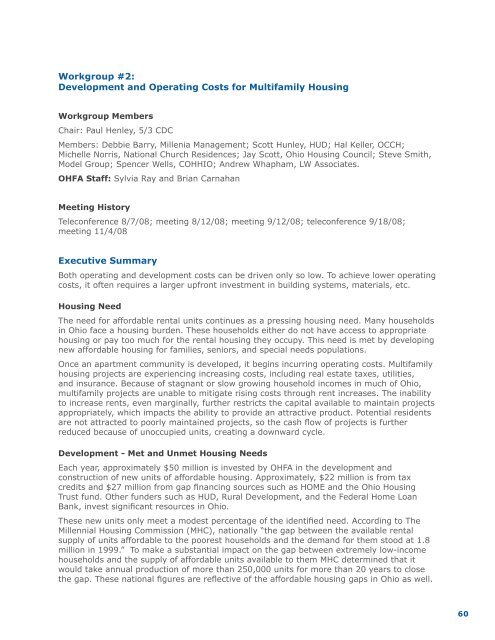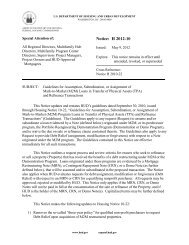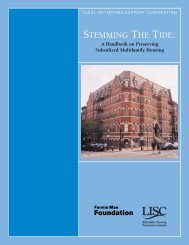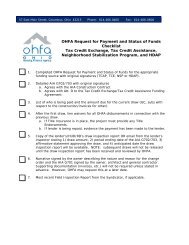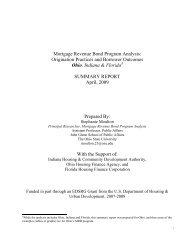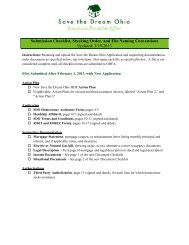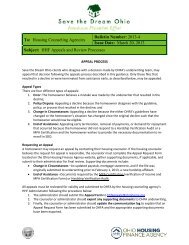OHFA Annual Plan - Ohio Housing Finance Agency
OHFA Annual Plan - Ohio Housing Finance Agency
OHFA Annual Plan - Ohio Housing Finance Agency
Create successful ePaper yourself
Turn your PDF publications into a flip-book with our unique Google optimized e-Paper software.
Workgroup #2:Development and Operating Costs for Multifamily <strong>Housing</strong>Workgroup MembersChair: Paul Henley, 5/3 CDCMembers: Debbie Barry, Millenia Management; Scott Hunley, HUD; Hal Keller, OCCH;Michelle Norris, National Church Residences; Jay Scott, <strong>Ohio</strong> <strong>Housing</strong> Council; Steve Smith,Model Group; Spencer Wells, COHHIO; Andrew Whapham, LW Associates.<strong>OHFA</strong> Staff: Sylvia Ray and Brian CarnahanMeeting HistoryTeleconference 8/7/08; meeting 8/12/08; meeting 9/12/08; teleconference 9/18/08;meeting 11/4/08Executive SummaryBoth operating and development costs can be driven only so low. To achieve lower operatingcosts, it often requires a larger upfront investment in building systems, materials, etc.<strong>Housing</strong> NeedThe need for affordable rental units continues as a pressing housing need. Many householdsin <strong>Ohio</strong> face a housing burden. These households either do not have access to appropriatehousing or pay too much for the rental housing they occupy. This need is met by developingnew affordable housing for families, seniors, and special needs populations.Once an apartment community is developed, it begins incurring operating costs. Multifamilyhousing projects are experiencing increasing costs, including real estate taxes, utilities,and insurance. Because of stagnant or slow growing household incomes in much of <strong>Ohio</strong>,multifamily projects are unable to mitigate rising costs through rent increases. The inabilityto increase rents, even marginally, further restricts the capital available to maintain projectsappropriately, which impacts the ability to provide an attractive product. Potential residentsare not attracted to poorly maintained projects, so the cash flow of projects is furtherreduced because of unoccupied units, creating a downward cycle.Development - Met and Unmet <strong>Housing</strong> NeedsEach year, approximately $50 million is invested by <strong>OHFA</strong> in the development andconstruction of new units of affordable housing. Approximately, $22 million is from taxcredits and $27 million from gap financing sources such as HOME and the <strong>Ohio</strong> <strong>Housing</strong>Trust fund. Other funders such as HUD, Rural Development, and the Federal Home LoanBank, invest significant resources in <strong>Ohio</strong>.These new units only meet a modest percentage of the identified need. According to TheMillennial <strong>Housing</strong> Commission (MHC), nationally “the gap between the available rentalsupply of units affordable to the poorest households and the demand for them stood at 1.8million in 1999.” To make a substantial impact on the gap between extremely low-incomehouseholds and the supply of affordable units available to them MHC determined that itwould take annual production of more than 250,000 units for more than 20 years to closethe gap. These national figures are reflective of the affordable housing gaps in <strong>Ohio</strong> as well.60


